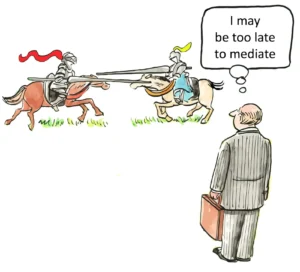Due Process Challenges in Digital Evidence Collection
The intersection of constitutional rights and technological advancement has created unprecedented due process challenges in digital evidence collection, forcing courts and legal practitioners to navigate complex terrain that the Framers could never have envisioned. As digital devices become repositories of our most intimate details, the processes by which this information is collected, authenticated, and presented in legal proceedings demand careful scrutiny to ensure fundamental fairness. The constitutional guarantees of due process—that no person shall be deprived of life, liberty, or property without fair procedures—face particular strain when applied to evidence that exists as binary code rather than physical matter.
Digital evidence presents unique challenges that traditional evidence collection procedures were not designed to address. The ephemeral nature of electronic data, its vulnerability to alteration, and the technical expertise required to properly preserve it create significant hurdles for ensuring that defendants receive the fair treatment our Constitution demands. These challenges are not merely academic—they have real consequences for individuals facing the overwhelming power of the state in criminal proceedings.
The rapid evolution of technology has outpaced legal frameworks, leaving courts to apply analog-era precedents to digital-age problems. This gap between technological reality and legal doctrine creates uncertainty that threatens both effective law enforcement and individual rights. As we will see, the proper collection and handling of digital evidence requires balancing competing interests: the government’s legitimate need to investigate crimes against the individual’s right to be free from unreasonable intrusions and to receive fair treatment throughout the legal process.
Constitutional Foundations of Digital Due Process
The Fifth and Fourteenth Amendments establish that no person shall be deprived of “life, liberty, or property, without due process of law.” This deceptively simple phrase encompasses both procedural protections (ensuring fair procedures) and substantive protections (limiting what government can do regardless of procedure). When applied to digital evidence collection, these constitutional guarantees require careful consideration of how new technologies interact with long-established legal principles.
The Fourth Amendment’s prohibition against “unreasonable searches and seizures” works in concert with due process requirements to constrain how the government may collect digital evidence. Traditional Fourth Amendment doctrine focused on physical intrusions into constitutionally protected spaces. However, as Justice Scalia recognized in Kyllo v. United States, when “the Government uses a device that is not in general public use, to explore details of the home that would previously have been unknowable without physical intrusion, the surveillance is a ‘search’ and is presumptively unreasonable without a warrant.” This principle has profound implications for digital searches, which can reveal intimate details without physical entry.
The Supreme Court’s decision in Riley v. California further acknowledged the unique privacy concerns raised by digital devices. Chief Justice Roberts observed that cell phones contain “the privacies of life” and that “a cell phone search would typically expose to the government far more than the most exhaustive search of a house.” This recognition that digital devices differ quantitatively and qualitatively from physical containers has begun to reshape Fourth Amendment jurisprudence, with inevitable implications for due process in how digital evidence is collected and used.
Chain of Custody Challenges in the Digital Realm
Perhaps no aspect of digital evidence collection presents more significant due process concerns than maintaining a proper chain of custody. While physical evidence can be sealed in evidence bags and secured in property rooms, digital evidence exists in a form that is inherently mutable and vulnerable to alteration without visible traces. This characteristic creates unique challenges for ensuring that digital evidence remains authentic and unaltered from collection to courtroom.
The chain of custody for digital evidence must document every action taken from the moment of collection until presentation in court. As one digital forensics expert explains, “If you don’t have a chain of custody, the evidence is worthless. Deal with everything as if it would go to litigation.” This meticulous documentation must include who collected the evidence, how and where it was stored, who accessed or transferred it, and when and how it was analyzed. Any gap in this documentation can lead to evidence being deemed inadmissible, potentially jeopardizing an entire case.
The consequences of failing to maintain proper chain of custody were illustrated in State v. Pulley (2018), where the South Carolina Supreme Court reversed a conviction due to inconsistencies in testimony and missing documentation regarding the handling and transfer of evidence. This ruling underscores the critical importance of properly documenting and preserving digital evidence to ensure its legal admissibility. For defendants, challenging the chain of custody represents a powerful strategy for questioning the reliability of digital evidence presented against them.
Authentication and Admissibility Hurdles
For digital evidence to be admissible in court, it must be properly authenticated—proven to be what its proponent claims. This requirement presents significant due process challenges given the ease with which digital information can be manipulated. Federal Rule of Evidence 901 requires that to authenticate an item of evidence, the proponent must produce evidence “sufficient to support a finding that the item is what the proponent claims it is.” Meeting this standard for digital evidence often requires specialized knowledge and technical expertise.
Authentication methods for digital evidence include testimony from witnesses, documentation of chain of custody, and forensic analysis to verify accuracy and authenticity. Hash values—mathematical algorithms that create a unique digital fingerprint of data—can help verify that evidence has not been altered since collection. However, even these technical measures are not foolproof, and courts must carefully evaluate whether authentication standards have been met before admitting digital evidence.
The “best evidence rule” further complicates matters by requiring presentation of the original or highest-quality version of digital evidence whenever possible. In the digital context, determining what constitutes an “original” can be challenging. Courts have generally accepted forensically sound copies of digital evidence when proper procedures are followed, but this acceptance is not universal or unconditional. Defendants must be vigilant in challenging digital evidence that may not meet these standards, as admission of improperly authenticated evidence can violate due process rights.
Privacy Concerns and Scope Limitations
The collection of digital evidence frequently implicates significant privacy interests that traditional search procedures were not designed to address. A single smartphone or computer may contain vast amounts of personal information spanning years of an individual’s life—most of which has no relevance to the investigation at hand. This creates a tension between law enforcement’s legitimate need to collect evidence and individuals’ constitutional right to privacy.
Courts have increasingly recognized the need for particularity in digital searches to protect privacy and ensure due process. In United States v. Comprehensive Drug Testing, the Ninth Circuit established protocols for searches of digital data, including requirements that searches be conducted by specialized personnel or an independent third party and that investigators disclose their search protocol. These procedural safeguards aim to prevent general rummaging through digital information unrelated to the specific evidence sought.
The particularity requirement of the Fourth Amendment takes on special importance in the digital context. Search warrants for digital evidence must describe with specificity what information may be seized, though courts have struggled to define appropriate limitations given the commingled nature of digital data. Some courts have required the use of search protocols or ex ante limitations on search methodologies, while others have relied on ex post review of the reasonableness of searches. These varying approaches create uncertainty that can undermine both effective law enforcement and due process protections.
IoT and Cloud Evidence Collection Complexities
The proliferation of Internet of Things (IoT) devices and cloud storage has created new frontiers in digital evidence collection with corresponding due process implications. IoT devices—from smart speakers to connected thermostats—continuously exchange data with their surrounding environment through sensors, creating potential evidence sources that exist outside traditional computing devices. This expansion of the digital evidence landscape presents novel challenges for investigators, courts, and defense attorneys alike.
IoT systems with billions of connected devices generate massive amounts of potential evidence, creating significant challenges for digital investigators who must connect with these devices to conduct thorough investigations. The technical complexity of IoT forensics requires specialized knowledge and tools that may not be readily available to all parties in legal proceedings, potentially creating due process imbalances between well-resourced prosecutors and defendants with limited access to technical expertise.
Cloud computing adds another layer of complexity by storing data across multiple jurisdictions and service providers. Questions of jurisdiction, ownership, and access rights complicate the collection of cloud-based evidence. When data is stored on servers in different states or countries, investigators must navigate conflicting legal frameworks and potentially obtain multiple warrants or court orders. These jurisdictional hurdles can impede both the government’s ability to collect evidence and defendants’ ability to challenge its collection, raising significant due process concerns.
Confronting Digital Forensic Tools and Expertise
The technical nature of digital evidence collection often requires specialized forensic tools and expert analysis, creating potential due process issues when these tools or experts are challenged. Digital forensic tools like Cellebrite, EnCase, or FTK are used to extract, analyze, and present digital evidence, but these tools are not infallible. They may contain bugs, limitations, or biases that can affect the accuracy and reliability of the evidence they produce.
Defendants face significant challenges in confronting the digital forensic tools used against them. Many of these tools are proprietary, with vendors claiming trade secret protection for their source code and internal workings. This lack of transparency makes it difficult for defendants to effectively challenge the reliability of evidence produced by these tools. Some courts have recognized this problem and ordered disclosure of source code or validation studies, but such orders remain the exception rather than the rule.
The expertise gap between prosecution and defense further exacerbates due process concerns. Prosecutors often have access to specialized digital forensic units or can retain expert witnesses with advanced technical knowledge. Defendants, particularly those with limited resources, may struggle to obtain comparable expertise to evaluate and challenge digital evidence. This imbalance threatens the adversarial process that lies at the heart of our legal system, potentially undermining the truth-seeking function of trials involving digital evidence.
Cross-Border and Jurisdictional Complications
Digital evidence frequently crosses jurisdictional boundaries, creating complex legal questions about which laws apply to its collection and use. Data may be stored on servers in different states or countries, transmitted across international borders, or accessible from multiple locations simultaneously. These characteristics of digital information challenge traditional notions of jurisdiction that were developed for physical evidence located in a single, identifiable place.
The legal frameworks governing cross-border digital evidence collection remain fragmented and inconsistent. The Stored Communications Act, which governs access to electronic communications in the United States, was not designed with cloud computing or global data flows in mind. International agreements like Mutual Legal Assistance Treaties (MLATs) provide mechanisms for cross-border evidence collection but are often criticized as slow and cumbersome, ill-suited to the speed at which digital evidence can be created, modified, or destroyed.
These jurisdictional complexities create due process risks from multiple directions. On one hand, law enforcement may be unable to access relevant evidence stored in foreign jurisdictions, potentially leading to incomplete investigations or wrongful acquittals. On the other hand, evidence may be collected under foreign legal standards that provide fewer protections than U.S. law, raising questions about whether such evidence should be admissible in U.S. courts. Defendants may also face practical obstacles in challenging evidence collected under foreign legal systems with different procedural protections.
Metadata and Hidden Data Considerations
Digital evidence contains layers of information beyond what is immediately visible to users. Metadata—data about data—can reveal when files were created or modified, who accessed them, what devices were used, and other contextual information that may be crucial to investigations. Similarly, deleted files, browser histories, and system logs may contain valuable evidence that users believed was no longer accessible. These hidden data sources raise important due process questions about notice, access, and reliability.
The collection and use of metadata and hidden data must comply with constitutional requirements, including the Fourth Amendment’s prohibition on unreasonable searches. Courts have struggled to apply traditional Fourth Amendment doctrines to metadata, with some treating it as less protected than content data. However, as the Supreme Court recognized in Carpenter v. United States, certain types of metadata—like cell site location information—can reveal intimate details of a person’s life and thus deserve stronger constitutional protection.
From a due process perspective, metadata presents challenges of transparency and equal access. Defendants may not be aware of what metadata exists or how it has been interpreted without specific technical knowledge or expert assistance. Prosecutors may selectively present metadata that supports their case while overlooking contradictory information. These asymmetries in information and expertise can undermine the fairness of proceedings involving digital evidence, making it essential that courts ensure defendants have meaningful opportunities to examine and challenge all aspects of digital evidence, including its metadata.
Encryption and Password Protection Dilemmas
Encryption and password protection present some of the most contentious due process challenges in digital evidence collection. When digital evidence is encrypted or password-protected, investigators must either obtain the decryption key or password from the suspect or attempt to circumvent these protections through technical means. Both approaches raise significant constitutional questions that courts continue to grapple with.
The Fifth Amendment’s protection against self-incrimination may prevent the government from compelling suspects to provide passwords or decryption keys if doing so would constitute a testimonial act. Courts have reached different conclusions on this question, with some finding that providing a password is testimonial because it communicates knowledge, while others have applied the “foregone conclusion” doctrine when the government can show it already knows the suspect possesses the information sought. This unsettled legal landscape creates uncertainty for both law enforcement and individuals subject to investigation.
When suspects refuse to provide access to encrypted data, law enforcement may attempt to bypass encryption through technical means. These efforts raise questions about the reliability and integrity of the evidence obtained. Defense attorneys should carefully scrutinize the methods used to access encrypted data, as improper techniques may alter the evidence or call its authenticity into question. The rapidly evolving nature of encryption technology ensures that these issues will continue to present novel legal challenges for years to come.
Virtual Court Proceedings and Digital Evidence Presentation
The COVID-19 pandemic accelerated the adoption of virtual court proceedings, raising new questions about how digital evidence should be presented and examined in remote settings. While technology can increase efficiency and access to justice, it may also diminish important aspects of in-person proceedings, such as the ability to effectively confront witnesses or to communicate confidentially with counsel during hearings. These changes have significant implications for due process rights in cases involving digital evidence.
The presentation of digital evidence in virtual proceedings presents practical challenges that can affect due process. Attorneys report difficulties in directing witnesses through digital exhibits, ensuring all participants can properly view the evidence, and maintaining control over the presentation. As one lawyer noted, “I’ve done depositions where we had all the exhibits just on a screen shown to the witness via PDF, and it was a nightmare. Directing a witness how to scroll or zoom, or which page they are on… or even giving the witness the opportunity to leaf through the document and familiarize themselves with it are all a lot more cumbersome in digital than just handing someone a stapled set of pages.”
Courts must carefully balance the efficiencies gained through virtual proceedings against the potential impact on defendants’ rights. This may require developing new protocols for the presentation and examination of digital evidence in remote settings, ensuring that all parties have equal access to the evidence, and preserving the meaningful opportunity to challenge evidence that lies at the heart of due process. As virtual proceedings become more common, these considerations will only grow in importance.
Defense Strategies for Challenging Digital Evidence
Effectively challenging digital evidence requires a combination of legal knowledge, technical expertise, and strategic thinking. Defense attorneys must be prepared to scrutinize every aspect of how digital evidence was collected, preserved, analyzed, and presented to identify potential due process violations or reliability concerns. This multifaceted approach can make the difference between conviction and acquittal in cases that turn on digital evidence.
Expert testimony plays a crucial role in challenging digital evidence. Qualified digital forensics experts can examine the methods used in collecting and analyzing evidence, identify procedural errors, and assess the reliability of forensic tools employed. Their testimony can help demystify complex technical issues for judges and juries, highlighting flaws, inconsistencies, and potential biases in the prosecution’s evidence. However, obtaining such expertise requires resources that may not be available to all defendants, creating potential inequities in the justice system.
Cross-examination of forensic experts and law enforcement officers provides another avenue for challenging digital evidence. Effective questioning should probe the collection, handling, and analysis of the evidence, focusing on areas such as: the procedures followed during collection, any deviations from standard protocols, the reliability and accuracy of forensic tools used, and any discrepancies or anomalies in the data. By highlighting inconsistencies in testimony, potential biases, and questions about qualifications and experience, defense attorneys can undermine the credibility of both the evidence and those presenting it.
Legislative and Judicial Responses to Digital Due Process
The challenges of digital evidence collection have prompted various legislative and judicial responses aimed at balancing effective law enforcement with due process protections. These efforts reflect a growing recognition that traditional legal frameworks may be inadequate for addressing the unique characteristics of digital evidence and the privacy interests it implicates.
Legislative efforts to address digital due process concerns have been piecemeal and often reactive. The Electronic Communications Privacy Act (ECPA), originally passed in 1986, has been criticized as outdated and ill-suited to modern technology. Various amendments and proposals have sought to modernize ECPA and similar laws, but comprehensive reform remains elusive. Some states have enacted their own digital privacy laws that provide stronger protections than federal law, creating a patchwork of regulations that can complicate multi-jurisdictional investigations.
Courts have played a significant role in adapting constitutional principles to digital evidence challenges. The Supreme Court’s decisions in cases like Riley v. California (requiring warrants for cell phone searches) and Carpenter v. United States (requiring warrants for cell site location information) demonstrate a willingness to recognize the unique privacy concerns raised by digital technology. However, lower courts continue to grapple with applying these principles to the myriad forms of digital evidence encountered in modern investigations, leading to inconsistent outcomes and ongoing uncertainty.
The Role of Artificial Intelligence in Digital Evidence
The emergence of artificial intelligence (AI) in digital evidence collection and analysis introduces new dimensions to due process considerations. AI-based systems can process vast amounts of digital data more quickly than human analysts, potentially identifying patterns and connections that might otherwise go unnoticed. However, these capabilities raise important questions about transparency, reliability, and fairness that must be addressed to ensure due process.
AI systems used in digital forensics may suffer from various forms of bias or error that can compromise the reliability of evidence. These systems are trained on data sets that may contain inherent biases, and their algorithms may prioritize certain types of information over others in ways that are not immediately apparent to human observers. Without transparency about how these systems function and make decisions, defendants may be unable to effectively challenge evidence derived from AI analysis.
The “black box” nature of many AI systems presents particular due process concerns. When AI algorithms are proprietary or too complex for straightforward explanation, neither prosecutors nor defense attorneys may fully understand how conclusions were reached. This lack of transparency undermines the adversarial process that is fundamental to our legal system. Courts will need to develop standards for the admissibility of AI-derived evidence that balance its potential value against these due process concerns.
Future Trends and Emerging Challenges
As technology continues to evolve, new due process challenges in digital evidence collection will inevitably emerge. Anticipating these challenges can help courts, legislators, and practitioners develop proactive approaches that protect both effective law enforcement and individual rights in a rapidly changing technological landscape.
The proliferation of biometric data—including fingerprints, facial recognition, voice patterns, and even gait analysis—presents emerging due process concerns. As these technologies become more widespread in both consumer devices and surveillance systems, questions arise about their accuracy, reliability, and the legal standards governing their collection and use. Courts have only begun to address whether biometric data receives the same constitutional protections as other forms of evidence, and how existing doctrines like the Fifth Amendment’s protection against self-incrimination apply to biometric authentication.
Quantum computing represents another frontier that may fundamentally alter the landscape of digital evidence. Quantum computers could potentially break current encryption methods, giving law enforcement new abilities to access previously secured data. Conversely, quantum encryption could create virtually unbreakable security for digital information, potentially placing it beyond the reach of legitimate investigations. These developments will require thoughtful reconsideration of the balance between security and privacy, and the procedural safeguards necessary to ensure due process in a post-quantum world.
Conclusion
The due process challenges in digital evidence collection reflect the broader tension between technological advancement and constitutional principles that defines much of modern legal discourse. As digital devices become ever more integral to our daily lives, the information they contain will continue to play a crucial role in legal proceedings. Ensuring that this evidence is collected, preserved, and presented in ways that respect fundamental fairness remains essential to maintaining the integrity of our justice system.
The constitutional guarantees of due process were not designed with digital evidence in mind, but their underlying principles of fairness, notice, and opportunity to be heard remain as vital in the digital age as they were when first enshrined in our Constitution. Adapting these principles to new technological realities requires ongoing dialogue among courts, legislators, law enforcement, defense attorneys, and technical experts. This dialogue must acknowledge both the legitimate needs of law enforcement and the fundamental rights of individuals subject to investigation.
As we navigate the complex intersection of technology and law, we would do well to remember that due process is not merely a technical requirement but a reflection of our commitment to justice and human dignity. The challenges of digital evidence may be new, but the principles at stake are as old as our republic. By approaching these challenges with a commitment to both effective law enforcement and robust constitutional protections, we can ensure that justice is served in the digital age.
Citations:
- Research on Digital Evidence Admissibility in Legal Proceedings
- From Pixels to Prosecution: Digital Evidence in Court Cases
- Best Practices for Maintaining Chain of Custody for Digital Evidence
- Scholarly Analysis of Digital Forensics Legal Standards
- Why Lawyers Continue to Use Paper Despite Digital Alternatives
- Questions About Digital Forensics and Legal Requirements
- Academic Research on Digital Evidence Authentication Methods
- Analyzing Digital Evidence Admissibility in Threat Prosecutions
- Research on Digital Evidence Collection Legal Challenges
- Exposing Weaknesses in Digital Evidence for Effective Defense
- The Impact of Digital Evidence in Modern Criminal Trials
- Best Practices for Handling Digital Evidence in Investigations
- Scholarly Research on Digital Evidence Authentication Standards
- Legal Challenges in Defending Against Digital Evidence
- Medical Research on Digital Evidence in Healthcare Investigations
- Academic Study on Digital Evidence Admissibility Requirements
- Digital Forensics Investigation: Admissibility of Digital Evidence Issues
- Research on Chain of Custody for Digital Evidence
- Research on Criminal Procedural Rights in Digital Evidence
- Court Procedures When Presenting Digital Evidence at Trial
- Technology’s Impact on Criminal Defense Practice
- Admissibility of Electronic Documents in Legal Proceedings
- Lawyers Discuss AI-Generated Evidence in Court Cases
- E-Discovery Due Process Guide for Public Defenders
- Types and Examples of Digital Evidence in Legal Cases
- Navigating E-Discovery Challenges for Federal Prosecutors
- Research on Digital Evidence Authentication in Criminal Proceedings
- Scholarly Analysis of Digital Evidence Admissibility Standards
- Research on Digital Evidence Collection Legal Challenges
- ArXiv Paper on Digital Evidence Analysis Methods
- Court Procedures When Presenting Digital Evidence at Trial
- EFF and ACLU Challenge Forensic Software in Federal Court
- Discussion on Current State of Digital Forensics
- Comparing Police Forensics vs. Outsourced Digital Investigation Services
- Admissibility of Publicly Available Information as Evidence
- CDR Dumps Now Considered Fourth Amendment Violations
- Digital Forensic Analyst in Law Enforcement AMA
- When Illegally Acquired Evidence Becomes Admissible in Court
- How to Learn Digital Forensics: Beginner’s Guide
- Legal Implications When Data Centers Become Crime Scenes
- Steps for Admitting Video Evidence at Trial
- Chain of Custody Questions for Digital Drives and Evidence
- Electronic Devices Seized During UK Police Investigation
- NIJ Report on Improving Digital Evidence Collection Methods
- Understanding Different Approaches to Digital Evidence Collection
- The Ultimate Guide to Chain of Custody in Digital Forensics
- Scientific Research on Digital Evidence Collection Methodologies
- Chain of Custody Best Practices in Digital Forensic Investigations
- Understanding Digital Evidence: Guide for Law Enforcement Investigators
- Digital Evidence Admissibility Requirements in Cybercrime Cases
- CISA Guidance on Chain of Custody for Critical Infrastructure
- Legal and Ethical Issues in Digital Investigations Explained
- Maintaining Digital Chain of Custody and Avoiding Common Challenges
- Forensic Bytes: Admissibility and Challenges of Digital Evidence
- Research on Digital Evidence Authentication in Legal Proceedings
- Academic Study on Digital Evidence Collection Best Practices
- Scholarly Analysis of Digital Evidence Admissibility Standards
- Research on Chain of Custody for Digital Evidence
- Legal Videography: An Overlooked Niche in the Industry
- How Prosecutors Handle Digital Evidence in Criminal Cases
- Biggest Challenges When Handling Digital Evidence in Legal Cases
- Legal Advice vs. Information: Understanding the Difference
- Proving Innocence Through Digital Evidence Collection Methods
- AMA with Professionals Who Extract Text Message Evidence
- Best Methods for Attorneys to Review Acquired Digital Data
- Will AI Replace Lawyers? Law Students Discuss Future Implications
- Public Defenders Discuss Digital Evidence Storage Challenges
- Using Social Media for Legal Research and Evidence Collection
- Attorney Shows Reporters Massive Digital Evidence in Celebrity Case
- Managing PST Exports for Legal Team Document Review
- Discovery Process Requirements in Civil Litigation Cases
- Starting and Running a Digital Forensics Business
- Due Process Rights and Protections in Legal Proceedings
- Electronically Stored Information (ESI) Definition and Legal Implications
- Virtual Courtrooms: Technology’s Impact on Legal Proceedings
- Evidence Collection Methods in Federal Computer Crime Cases
- Hidalgo County DA’s Office Transforms Digital Evidence Management
- Digital Evidence in Criminal Defense: Texts to Social Media
- E-Discovery’s Impact on Modern Legal Proceedings
- Digital Due Process Coalition for Electronic Privacy Rights
- Defense Lawyers Face Challenges Accessing Digital Evidence
- Updated Guide for Preserving Social Media Evidence
- Crime Control Model in Criminal Justice System
- Medical Research on Digital Evidence in Healthcare Investigations
- Streamlining Digital Evidence Management for District Attorneys
- AI, Due Process, and Scientific Evidence in Legal Proceedings
- Research on Digital Evidence Collection Legal Challenges
- Academic Analysis of Digital Evidence Authentication Methods
- Scholarly Research on Digital Evidence Admissibility Standards
- Study on Chain of Custody Requirements for Digital Evidence
- Challenging the Authenticity of Digital Evidence in Court
- Admissibility Issues with Digitally Enhanced Evidence in Court
- Are HDR Photos Admissible as Evidence in Court?
- When Will Deepfakes Make Digital Evidence Unreliable in Court?


















